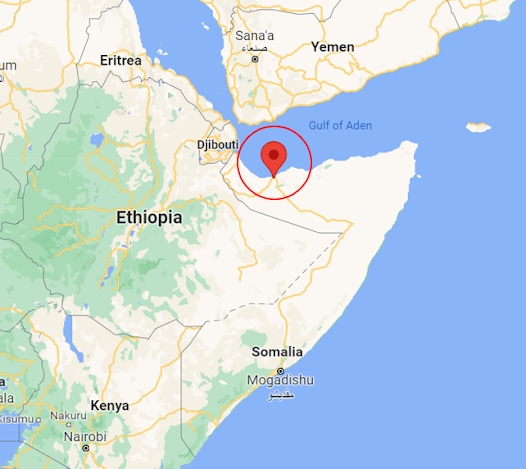Groundwater Irrigation: A Potential Saviour for Zambia's Agricultural Sector? (I)
Over the last two weeks, I investigated the use of GM crops to improve food security in Sub-Saharan Africa, specifically Ethiopia. Moving on, this will be the first post of a two-part series exploring the potential of another method in improving food security and agricultural productivity in Zambia: groundwater irrigation (GWI).
Groundwater's Recognition
Before we explore GWI, it is important to consider groundwater's recognition in the field of hydrology. Going back to my first post, you may remember Malin Falkenmark's Water Stress Index (WSI) which explicitly linked food security to freshwater availability. Early applications of the WSI equated renewable freshwater resources to mean annual river runoff (MARR). However, MARR conceals intra- and inter-annual variabilities in freshwater which are extreme in sub-Saharan Africa. By adopting MARR, the WSI views changes in soil moisture and groundwater storage as insignificant. The exclusion of groundwater is especially concerning as it is the largest distributed freshwater store worldwide.
In this light, Falkenmark has expressed the need to move on from the WSI. As such, Damkjaer and Taylor (2017) propose a threefold change to the characterisation of water scarcity involving:
- Consideration of intra- and interannual freshwater supply and demand variability.
- Quantification of water scarcity using verifiable physical measures for freshwater demand and supply.
- The use of physical water scarcity measures as a catalyst for participatory decision-making about storage needs.
Whilst no metric is perfect, employing this framework is a starting point from which we can traverse the blanket application of the WSI and start obtaining more accurate water scarcity measurements that account for groundwater.
GWI's Potential in Zambia
Zambia's groundwater stores are estimated to total 3950km3. This is nearly forty times greater than the amount of its annual renewable freshwater. Despite this abundance, GWI is limited. Villholth (2013) found that 41% of Zambia's irrigated land is under GWI. Whilst this may sound like a lot, it actually only accounts for 0.3% of total arable land.
Instead, rainfed agriculture is dominant. Whilst this minimises costs, highly seasonal rainfall results in crop failure and yield gaps, threatening food security. This, alongside challenges posed by growing populations and market conditions, highlights the need for a more sustainable, resilient and intensive agricultural system
So, why should Zambia upscale its GWI?
First, GWI is associated with improved food security. For many (semi-) arid nations like Zambia with perennially-absent surface waters, groundwater is the only reliable freshwater source. Moreover, sufficient groundwater storage can sustain abstraction through inter-annual recharge and thus provides a relatively stable supply of freshwater for irrigation year-round. This helps to achieve greater annual crop yields and land productivity compared to rainfed agriculture. Higher crop yields also allow smallholders to transition from subsistence to market-oriented agriculture, providing tangible economic benefits. There is also the benefit of smallholder farmers tending to prefer GWI as they have autonomy in choosing how to uptake and operate it.
Furthermore, global mean air temperature is predicted to rise by 2°C. This is significant as atmospheric water retention rises exponentially with temperature: according to the Clausius-Clapevron relationship, it can increase by as much as 7% per 1°C of warming. Fischer et al. (2019) also estimate that the most intense precipitations events will become twice as
frequent per degree of global warming whilst light precipitation will be fewer. Needless to say, this will have serious implications for Zambia's rainfed agriculture and exacerbate the aforementioned issues it already faces.
A Glimmer of Hope
Although increasingly unpredictable rainfall threatens agricultural production and food security in Zambia, there is reason for hope. Research has suggested that "fewer, heavier bursts" of rainfall are beneficial for overall groundwater recharge, especially in sub-Saharan Africa. In some instances, the transition from perennial grasslands to cultivated lands in semi-arid regions has also increased groundwater levels due to lower surface evapotranspiration demands. Given this, GWI could help Zambia adapt to climate variability and reduce dependence on rainfed cropping. This is important because, as noted by the African Climate Report, the capacity to manage existing climate variability is essential in adapting to a future changed climate. Transforming the agricultural system now may therefore be the key to ensuring sustainable agriculture and food security for generations to come.
GWI seems promising, especially when you consider that Zambia has been identified as the Sub-Saharan African country with the highest percentage of arable land potentially irrigable with groundwater. There is more to this story though, notably logistics and problems. This is where we turn to next week.
In the meantime, I recommend watching this video for an overview of Africa's groundwater potential.
Video Research findings by UPGro about groundwater in Africa.


Comments
Post a Comment